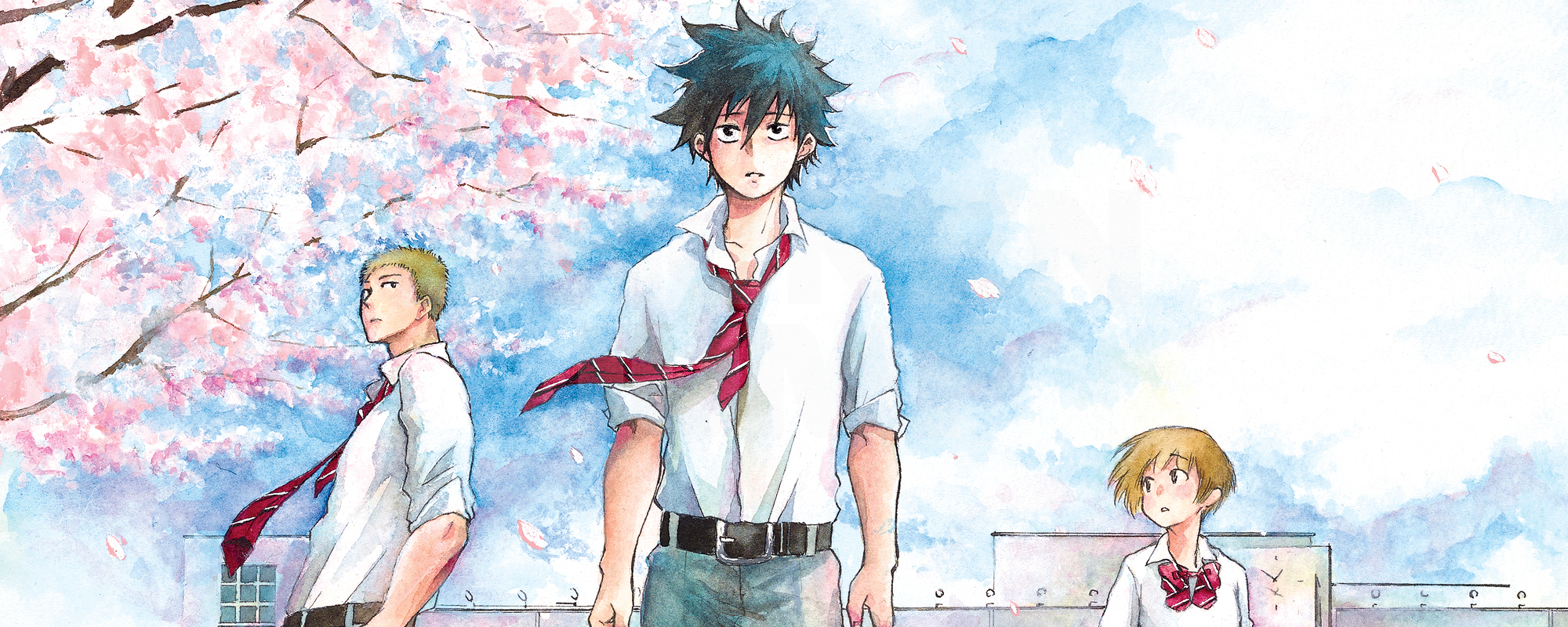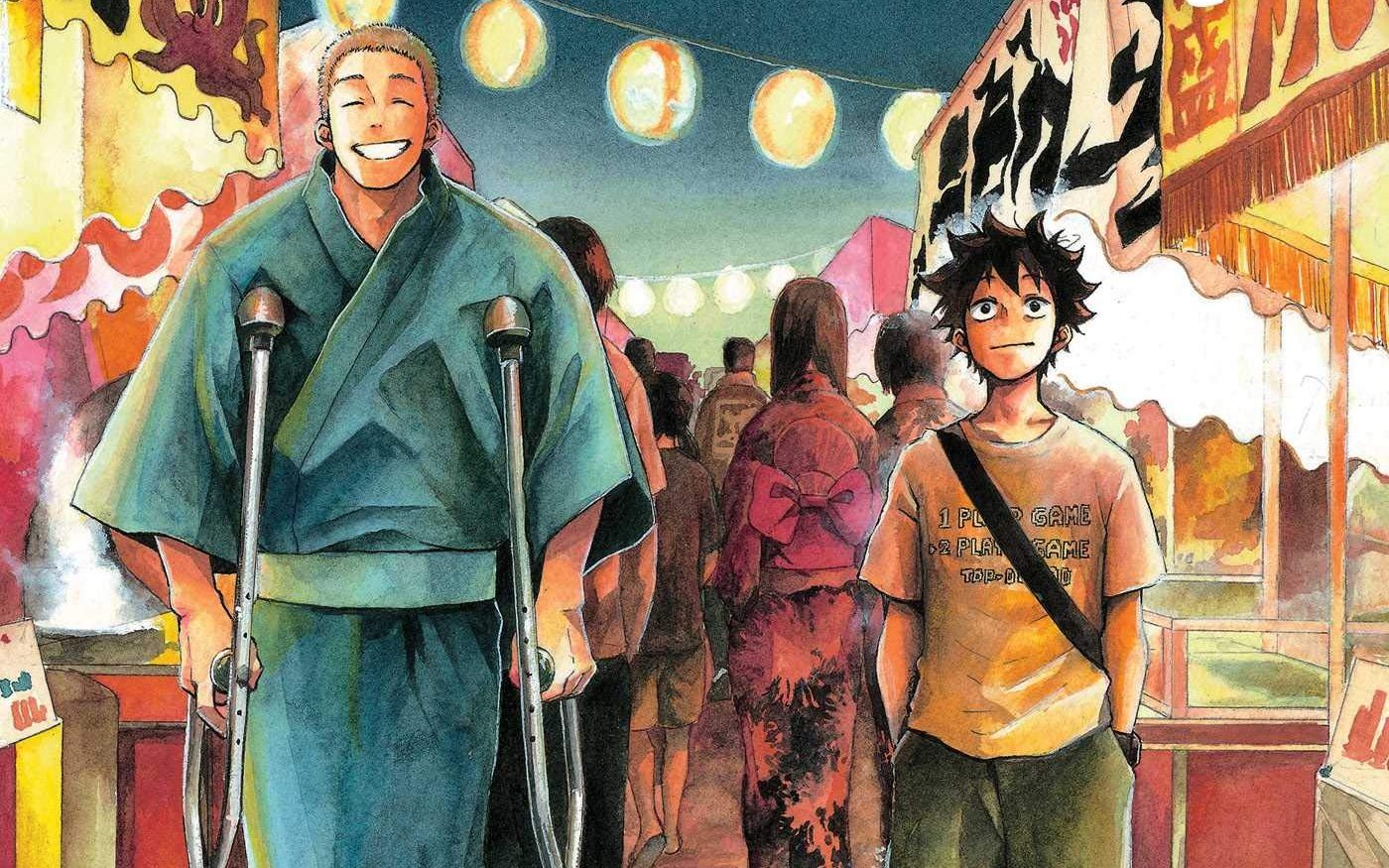This review dives deep into Blue Flag, a heartfelt shoujo romance by Kaito, where shy Futaba and kind-hearted Taichi find themselves tangled in a love triangle that soon grows more complex. On ComicK, we’ll explore its touching character dynamics, emotional storytelling, art style, and why this manga stands out among slice-of-life romances.
A Gentle Beginning That Feels All Too Real
When I first picked up Blue Flag, I wasn’t expecting to be pulled so deeply into a story that feels so close to real life. Futaba, the painfully shy girl who struggles to express herself, immediately struck a chord with me. Her awkwardness, her longing to be noticed, and her innocent admiration for Tomo remind us of the fragile heartbeats of first love.
But what makes the story different is Taichi, who accidentally becomes the bridge between Futaba and her crush. His clumsy attempts at helping her are never perfect yet they’re so authentic that you can’t help but root for him. By the end of the first volume, it’s clear that his feelings may not be as straightforward as he first thought.

This opening dynamic is where Blue Flag shines: it doesn’t try to dramatize romance with clichés, but instead builds it up with small, believable interactions. That’s why I couldn’t stop turning the pages I wanted to see where these emotions would lead.
Characters Who Feel Like Friends You’ve Known Forever
What I love about Kaito’s writing is that every character feels distinct, yet familiar. Futaba’s innocence is balanced by Taichi’s quiet kindness, while Tomo though the center of Futaba’s crush brings his own presence without stealing the spotlight. Later, new characters enter, adding even more layers to the relationships, turning a triangle into a web of emotions.
Each character is given a voice and personality that makes them stand out. There’s no sense that they are cardboard cutouts serving the plot. Instead, they feel like people you might pass by in school hallways or see on the train home. That authenticity made me invest in their happiness, even when things became messy.
For me, the best part was how I could easily connect with them. I found myself remembering my own high school years the crushes, the misunderstandings, the bittersweetness of realizing that love is never as simple as it seems.
The Emotional Weight Beneath the Lighthearted Moments
On the surface, Blue Flag looks like a light romance, but underneath lies a deeper emotional current. Kaito doesn’t shy away from showing how fragile teenagers can be, whether it’s bullying, grief, or self-image issues. There are moments when characters joke about body sizes or flirt awkwardly, but these small conversations reveal the insecurities we all carry.
What stood out to me is how the manga balances sweetness with seriousness. You might laugh at Futaba’s nervous outbursts in one panel, and then suddenly feel your chest tighten as Taichi struggles with emotions he can’t yet name. It’s a rollercoaster, but one that feels natural instead of forced.
That balance is why I’d recommend Blue Flag not just to fans of shoujo, but to anyone who enjoys stories with emotional depth hidden beneath everyday life. It’s not just a romance it’s a mirror to our teenage selves.
Kaito’s Art: Simple, Yet Strikingly Expressive
Art plays a huge role in why Blue Flag feels so immersive. Kaito’s style may appear simple at first glance, but the longer you read, the more you notice how much detail is poured into every scene. The backgrounds whether it’s a classroom, a quiet street, or a summer afternoon are drawn with such care that they almost feel like photographs.
Character expressions, while subtle, are powerful. A single glance, a nervous blush, or even silence between two people can carry more weight than dialogue. I found myself rereading certain panels just to admire how much emotion was conveyed without words.
There’s also a softness to the art that complements the story perfectly. It doesn’t overwhelm you with flashy designs, but instead quietly draws you in, making you focus on the feelings between characters rather than external spectacle.

Why Blue Flag Stands Out Among Romance Manga
With so many romance manga out there, it’s easy for titles to blur together—but Blue Flag has a distinct voice. It doesn’t rely on dramatic confessions or overly stylized tropes. Instead, it gives us the gift of patience, showing how love grows through misunderstandings, quiet moments, and honest mistakes.
Another reason it stands out is its relatability. You don’t need to be a die-hard manga fan to understand the emotions here. The themes of friendship, love, and self-discovery transcend cultural boundaries, making it a story anyone can resonate with.
For readers who have enjoyed series like Ao Haru Ride or Orange, Blue Flag feels like a natural recommendation. Yet, it also carves out its own unique identity less dramatic, more intimate, and infinitely touching.
A Story Worth Experiencing on ComicK
After finishing the first volume, I couldn’t shake the feeling that Blue Flag wasn’t just telling me a story it was reminding me of my own. That’s the magic of this manga: it sneaks into your heart quietly, then stays there long after you close the book.
On ComicK, this review is more than just words it’s a heartfelt recommendation. If you’re searching for a manga that captures both the joy and vulnerability of young love, this is one you simply can’t skip.
I’d even go as far as to say Blue Flag is one of the most emotionally honest romance manga I’ve read in years. Don’t let its simplicity fool you sometimes, the quietest stories are the ones that speak the loudest.
Read more:
- Review Number Five: Taiyo Matsumoto’s Surreal Superpower Saga
- Review Phantom Mansion: Haunting Tales of Pain and Obsession
